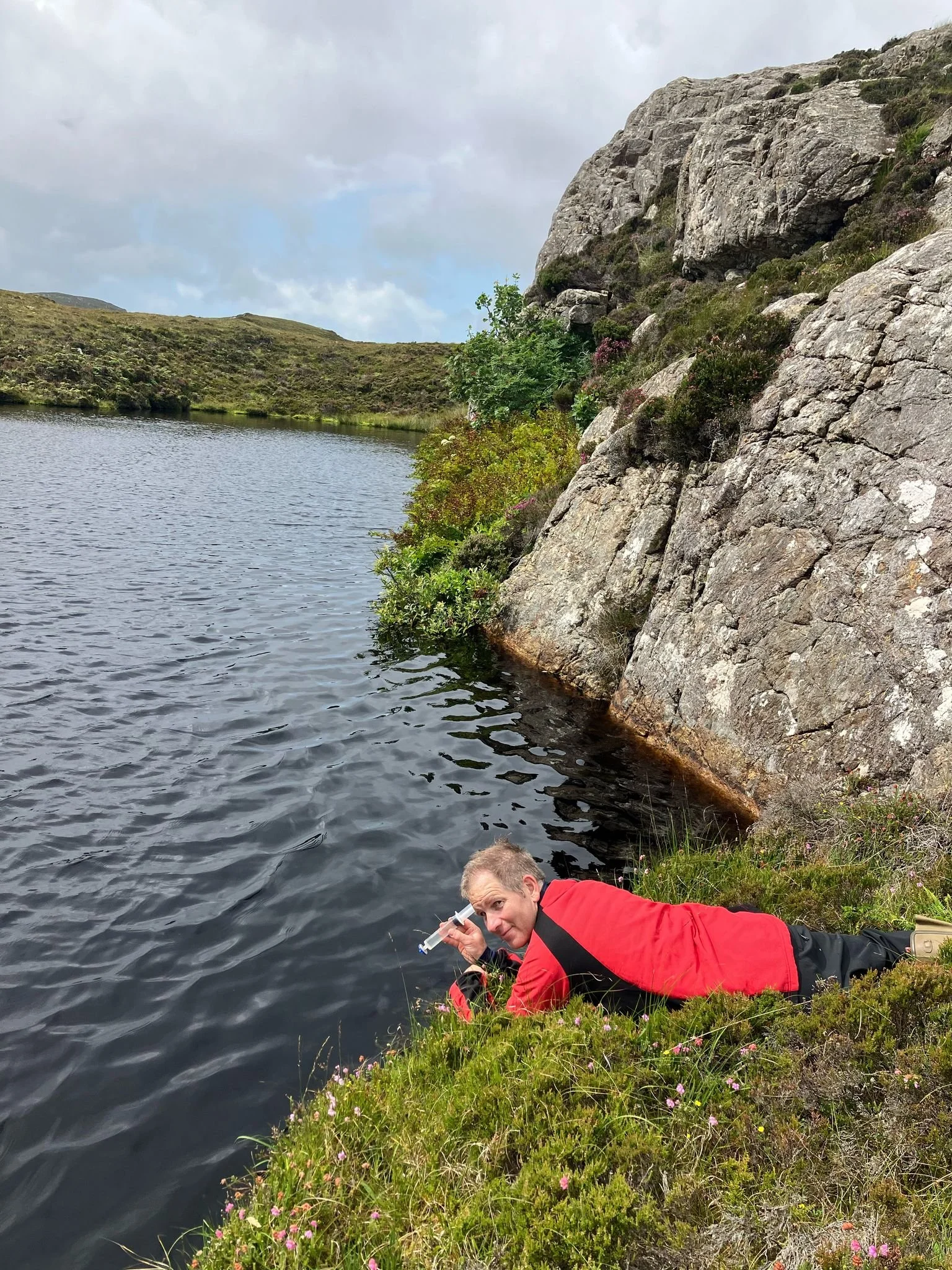The eDNA results are in. What we’ve found in Ronay Island’s waterbodies
Throughout 2025, an extensive environmental baseline survey has been taking place on the island of Ronay, designed to understand the diversity and condition of its unique habitats. From bird and plant populations to insects and now aquatic life, the project aims to build a comprehensive picture of Ronay’s ecosystems to guide long-term conservation and land management strategies.
While previous surveys focused on land-based habitats, water ecosystems are an equally vital part of the island’s biodiversity. Conversations with local residents revealed stories of brown trout once caught in the lochs, but we wanted to know if they were still there. We were interested to know how many lochs are used by the otters that thrive along the coastline. What other species live hidden beneath the surface, and how might future land management affect them?
eDNA Technology
In early 2025, as we developed our survey strategy, a chance conversation with one of the ecologists opened the door to a new method, environmental DNA (eDNA) sampling. This technique detects traces of genetic material left behind by organisms in water. With expert input from Dr Lewis Campbell and Trace Biomonitoring, the team devised a plan to analyse all twelve of Ronay Island’s primary lochs for eDNA, examining 20 different groups.
Within each sample point a total of 1.5ltrs of water is collected sporadically along the 200m sample length and the water is syringed through an exceptional fine filter. This captures the DNA present within the water. The sample has a preserving solution added and is then sent off for analysis, using the ‘Tree of Life’ metabarcoding approach.
The collection was remarkably simple, if not wet at times!
Life under the surface
A few weeks after the samples were collected the results arrived and it isn’t an understatement to say that everyone involved within the project was blown away by the detail in the results.
The analysis revealed between 185 and 634 different organisms across the twelve lochs. The five lochs with direct connectivity to the sea (through streams leaving the loch straight down the hill to the sea) were the most diverse and unsurprisingly the isolated lochs on the higher ground were the least diverse.
One particularly interesting loch, separated from the sea by an old dam, contained both freshwater and marine species, including thicklip mullet, conger eel, and poor cod. Brown trout were detected in one loch and salmon in another, both connected to the sea via freshwater streams.
Otter DNA was found in four lochs, with strong readings in areas where evidence such as slides and spraints had been recorded.
What’s next from here
We continue to work through the species identified to see what other species of conservation concern may be present and look forward to sharing the results.
By undertaking these eDNA surveys we’ve highlighted how innovative tools like eDNA sampling can transform our understanding of ecosystems and help shape future conservation work.
The whole team from Ronay would like to thank Lewis Campbell from Trace Biomonitoring for all his support in getting this fascinating set of surveys completed.




